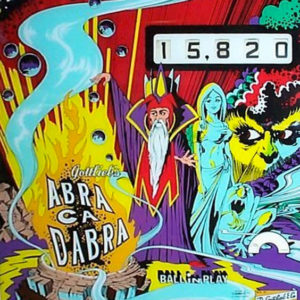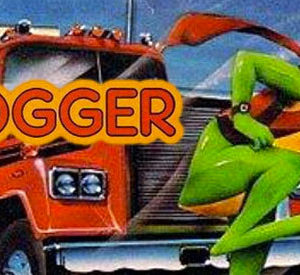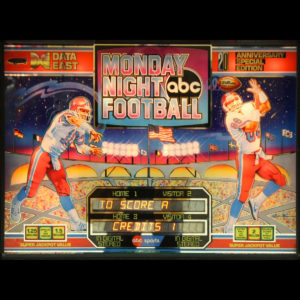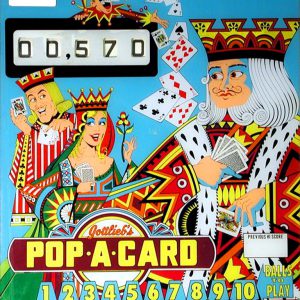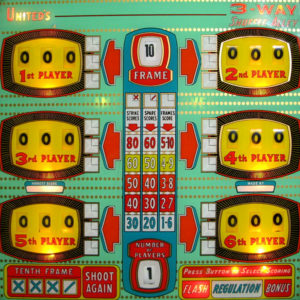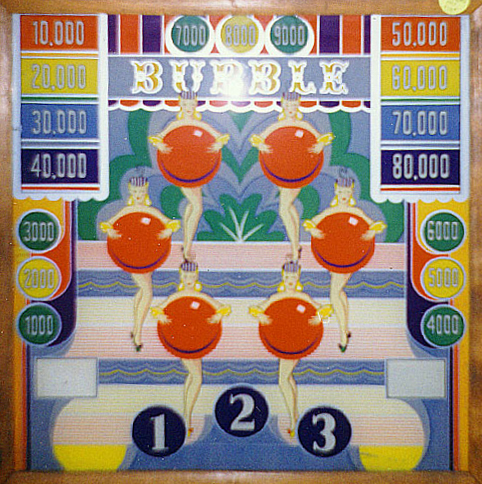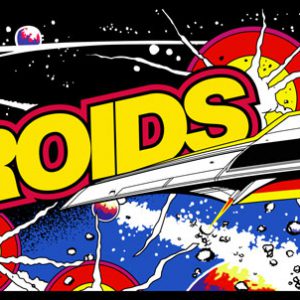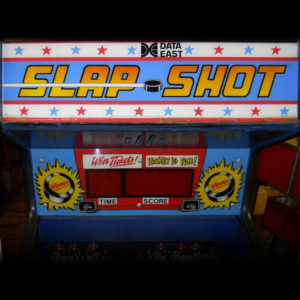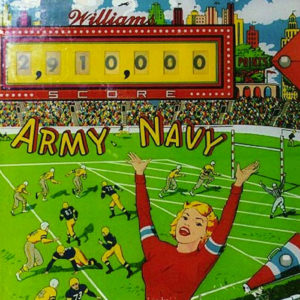-
Frogger is an arcade game introduced in 1981. It was developed by Konami, and licensed for worldwide distribution by Sega/Gremlin. The object of the game is to direct frogs to their homes one by one. To do this, each frog must avoid cars while crossing a busy road and navigate a river full of hazards. Skillful players may obtain some bonuses along the way. The game is regarded as a classic from the golden age of video arcade games and was noted for its novel gameplay and theme. It was also an early example of a game using more than one CPU, as it used two Z80 processors. Frogger is still popular and versions can be found on many Internet game sites. By 2005, Frogger had sold 20 million copies worldwide, including 5 million in the United States. The player starts with three, five, or seven frogs (lives). The player guides a frog which starts at the bottom of the screen. The lower half of the screen contains a road with motor vehicles, which in various versions include cars, trucks, buses, dune buggies, bulldozers, vans, taxis, bicyclists, and/or motorcycles, speeding along it horizontally. The upper half of the screen consists of a river with logs, crocodiles, and turtles, all moving horizontally across the screen. The very top of the screen contains five “frog homes” which are the destinations for each frog. Every level is timed; the player must act quickly to finish each level before the time expires. The only player control is the joystick used to navigate the frog; each push in a direction causes the frog to hop once in that direction. On the bottom half of the screen, the player must successfully guide the frog between opposing lanes of trucks, cars, and other vehicles, to avoid becoming roadkill. The middle of the screen, after the road, contains a median where the player must prepare to navigate the river. By jumping on swiftly moving logs and the backs of turtles, the player can guide his or her frog safely to one of the empty lilypads. The player must avoid crocodiles, snakes, and otters in the river, but may catch bugs or escort a lady frog for bonuses. When all five frogs are directed home, the game progresses to the next, harder level. After five levels, the game gets briefly easier yet again gets progressively harder to the next fifth level. There are many different ways to lose a life in this game (illustrated by a “skull and crossbones” symbol where the frog was), including: 1.Being hit by a road vehicle 2.Jumping into the river’s water 3.Running into snakes, otters or into a crocodile’s jaws in the river 4.Jumping into a home invaded by a crocodile 5.Staying on top of a diving turtle until it has completely submerged 6.Riding a log, crocodile, or turtle off the side of the screen 7.Jumping into a home already occupied by a frog 8.Jumping into the side of a home or the bush 9.Running out of time before getting a frog home Frogger is available as a standard upright or cocktail cabinet. The controls consist solely of a 4-direction joystick used to guide the frog’s jump direction. The number of simultaneous players is one, and the game has a maximum of two players. The game’s opening tune is the first verse of a Japanese children’s song called Inu No Omawarisan (The Dog Policeman). The song remained intact in the US release. Other Japanese tunes that are played during gameplay include the themes to the anime Hana no Ko Lunlun and Araiguma Rascal.Gottlieb Pop-A-Card was another classic ‘70s playfield designed by Ed Krynski with artwork by Gordon Morison. Only 825 of these units were made. The replay version of the game was called Drop–A-Card which, as usual, was a much higher produced machine. The open playfield of this game gives ample room for scoring the three banks of drop targets. To win free balls with this game, you have to either complete the 2, 3, 4, and 5 targets, or the 6, 7, 8, and 9 targets…or the 10, J, Q, K, and Ace targets. The first two options light the wow feature to award free balls during that ball in play. If you hit the 10 thru Ace targets to completion, four rollovers light up to score extra balls. Of course, score is another way to score more balls.Yet another legendary, genre-defining game – in an era replete with genre-defining classics - in which a single player takes control of a ship trapped in the middle of an asteroid field. A number of large, slow-moving asteroids drift randomly around the play area and must be shot by the player. When shot, the asteroids will break into a number of smaller pieces, which must also be shot until, eventually, all of the asteroids and fragments will be destroyed and the next wave begins. Asteroids introduced real-world physics to video games for the first time, with speed and inertia all adding to the player’s problems. As well as the inertia of the player’s ship – forcing the player to allow for the ship slowing down and speeding up whenever the thrust button was utilized – shot asteroids would often send fragments flying in seemingly random directions, and at varying and unpredictable speeds. As well as the ever-present asteroids, alien saucers also make a regular appearance. These move diagonally around the screen, firing at the player’s ship and must be quickly destroyed.In this, the first proper sequel to Namco’s legendary pill-eating maze game, players must once again run around a number of mazes, eating all of the pills that are scattered throughout. The ever-present ghosts (Blinky, Pinky, Inky and Sue) return to hamper the player’s progress. The infamous “power pills” are also present and correct, with four appearing in each maze. Namco introduced a number of changes and enhancements over the original game. The first difference is in the main character. For the first time in video-game history, the game’s lead character was female. Ms. Pac-man is almost identical to the original character with two main differences: she wears a bow in her “hair” and is also wearing lipstick. Another change from the original is that the bonus fruit items are no longer static but now move randomly around the mazes. Ms. Pac-man features four different maze layouts, which alternate every two to four screens: the first maze is only encountered in rounds 1 and 2 and has 220 dots and four power pills. There are two sets of tunnels in this maze equidistant from the center of the maze. You must clear this maze twice before moving on to the next maze. The second maze is only encountered in rounds 3, 4, and 5, and has 240 dots and four power pills. There are two sets of tunnels in this maze: one set in the lower half, and the other set at the very top. You must clear this maze three times before moving on to the next maze. The third maze is first encountered in round 6 and has 238 dots and four power pills. Unlike all other mazes, there is only one set of tunnels in this maze, slightly above the center of the board. You must clear this maze four times before moving on to the next maze. The fourth and final unique maze is first encountered in round 10 and has 234 dots and four power pills. There are two sets of tunnels in this maze, directly next to one another in the middle of the maze. The turns at the entrance to the tunnels change the usual immediate accessibility of the tunnels and should be taken into account. You must clear this maze four times before moving on to the next maze.
HOURS SUBJECT TO CHANGE! | Sun–Thurs: Noon–12am • Fri-Sat: Noon-2am | 19 NE 3rd Ave., Delray Beach, FL 33483 | (561) 266-3294 | Email Club



